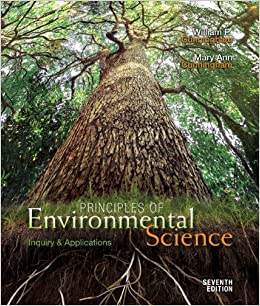
Principles of Environmental Science 7th Edition by William Cunningham,Mary Cunningham
Edition 7ISBN: 978-0071314947
Principles of Environmental Science 7th Edition by William Cunningham,Mary Cunningham
Edition 7ISBN: 978-0071314947 Exercise 3
Competitive Exclusion
The principle of competitive exclusion is one of the observations that can be explained by the process of evolution by natural selection. David Lack's classic study of finches on several Galápagos Islands is one example of this. These species are all closely related, in a genus of ground finches, Gespiza. (Often biologists abbreviate the genus name when it is used repeatedly: for example, Gespiza fuliginosa is shortened, for convenience, to G. fuliginosa ). Go to Connect to demonstrate your understanding of these graphs and what they tell us about how Lack demonstrated competitive exclusion in these species.

Plots of beak size on different islands (after d. Lack, 1947.)
The principle of competitive exclusion is one of the observations that can be explained by the process of evolution by natural selection. David Lack's classic study of finches on several Galápagos Islands is one example of this. These species are all closely related, in a genus of ground finches, Gespiza. (Often biologists abbreviate the genus name when it is used repeatedly: for example, Gespiza fuliginosa is shortened, for convenience, to G. fuliginosa ). Go to Connect to demonstrate your understanding of these graphs and what they tell us about how Lack demonstrated competitive exclusion in these species.

Plots of beak size on different islands (after d. Lack, 1947.)
Explanation

This question doesn’t have an expert verified answer yet, let Examlex AI Copilot help.
Principles of Environmental Science 7th Edition by William Cunningham,Mary Cunningham
Why don’t you like this exercise?
Other Minimum 8 character and maximum 255 character
Character 255


